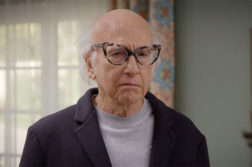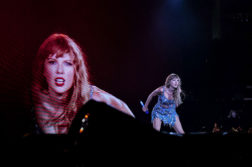With the 2010 Sydney Festival in full swing, and the Festival State’s season about to commence, it’s a good time to consider the ever-expanding festival culture — or is that culture of festivals? — booming around Australia.
If you look up the word "festival" in a dictionary, you’ll find it means two things: a celebration or anniversary, and a series of events in a limited time frame at the same place. Many Australian festivals seriously stretch even this broad definition. Some festivals are almost two months long and others are only half of one day. Some festivals occur within one room, within another festival and others take over an entire city.
Back in the day, the festival of Saturnalia — which was stolen by early Christians and turned into Christmas — was a time when civilians acted like statesmen, when gambling, drinking and general excess were legalised, when gifts were given and food stalls were set up around the city states. While our statesmen may not temporarily abandon their posts (or not officially), and police presence may often be intensified rather than abandoned, many contemporary festivals do embody the spirit of this prototypical historical festival: they are times of joy and of excess, be it excess of culture, of alcohol consumption or, indeed, of both.
As well as the international arts festivals that are run in state capitals, — in Sydney (January), Perth (Early February–Early March), Adelaide (Late February–Mid-March), Darwin (August), Brisbane (September) and Melbourne (October) — the major film festivals in Sydney (June) and Melbourne (Late July–Early August), — and the comedy festivals, — in Melbourne (Late March–Mid-April) and Sydney (Mid-April–Early May) — there is a raft of additional well-funded festivals that have either existed alongside these major events — like the Adelaide Fringe — or that have appeared relatively recently — as was the case with the surprise inclusion of Vivid Sydney on last year’s festival calendar.
And, of course, in the independent arts sector there has been a veritable explosion of festivals, with niches getting more and more "niched", and festival culture becoming more and more complex.
If you weren’t tired out by the list of mainstream festivals above, how about this selection of niche offerings? We now have the Now Now Festival (an annual experimental music festival which was established in Sydney and which moved to the Blue Mountains), the Difficult Music Festival (which is actually a sub-festival within the Now Now), the Festival of Dangerous Ideas (which may turn out to have been a one-off event), the Bicycle Film Festival (an international festival that tours to Sydney and Melbourne) and the Australian International Animation Festival (which starts in Wagga Wagga and travels around the world).
I spent some time talking to Zoe Coombs-Marr in order to try to get a handle on this dizzying proliferation of events. Coombs-Marr is a co-director of Sydney’s Imperial Panda Festival and one third of the performance trio Post which is building a career by festival hopping.
Coombs-Marr said, "Festival is basically all about community, whether you take your community to be Sydney, Grafton or experimental musicians." Grafton? Coombs-Marr’s favourite festival is the Grafton Jacaranda Festival. Each spring, Grafton celebrates the city turning lilac with street performances, markets, fashion parades and, the festival’s pièce-de-résistance, the crowning of the Jacaranda Queen.
This throws another curve ball at my plan to write a simple narrative about festival culture in Australia. The Jacaranda Festival turned 75 last year, making it Australia’s oldest floral festival. This Australian tradition of rural community cultural events is just as important as the metropolitan scene when thinking about the festivalisation of Australian culture. Sure, the independent arts world has been enhanced by events like Melbourne’s Next Wave, but just as festivals are not just about Jacaranda Queens — as the presence of hordes of groupies, hangers-on, culture vultures and scenesters surely attests — they are also not just about The Art.
Whether a festival is retro, rural, or urban underground, its defining quality might be something ineffable, something we might call The Vibe? "I mean," Coombs-Marr says, "Imperial Panda is about creating a vibe that people want to be around almost regardless of what the work is." An addendum to this statement comes soon enough. "But of course, if all the work was crap no one would come."
But, it is true enough that each year the same Capoeira group performs at the Surry Hills, Newtown and Marrickville local community festivals in inner Sydney — but the people still come. Do they do so for the Capoeira or for The Vibe?
Some festivals, of course, also involve big risks for organisers and performers. The Perv Queerotic Film & Video Festival took place at Sydney’s Red Rattler in late 2009 and screened a program of films significant to the history of both erotica and queer representation. The Perv showcased work that does not get seen because it is too erotic, too queer — or too perverse. The risk for any new festival is that no one comes to the party, but of course the films found an audience, and the closing night feature, Thundercrack, was rescued from obscurity to great acclaim.
Dynamics of supply and demand certainly influence the festivalisation of Australian culture. "Where there’s a will, there’s a way," as my Nanna would have said, or, perhaps, "where there’s a niche, there’s a market." While small festivals may ultimately cost the organisers more than they can make in return, both the supply and demand for intangibles like ideas and aesthetics is very high.
Of course, supply and demand of the financial kind also seem to run high and each year, the big festivals get bigger. Under Fergus Linehan, the Sydney Festival expanded so much that you can now no longer stretch out your legs while sipping your chardonnay watching the Symphony in the Domain.
Growth in scale can be observed in the smaller festivals too — although this is, perhaps, a product of an accretion of talented people doing more things for free.
Newcastle’s This Is Not Art festival, or TINA, started life as the National Young Writers’ Festival and the National Student Media Conference in 1998 and has expanded dramatically since; in 2009 TINA hosted a constellation of five large festivals. Imperial Panda was housed in two venues on its debut in 2008, and then sprawled to cover five in 2009.
Talking to Coombs-Marr about making a career out of festivals in Australia, I realise this in itself has become a specialised skill. Even if you have talent and ambition, you also need to know what a particular festival is for — and how to work it. Some festivals are for getting new work out there (like the open access Adelaide and Melbourne Fringes), some are for getting your work out there in a controlled environment (like the curated Next Wave), some will pay you for your work (if you’re lucky), others get started by artists (if you’re keen), and others again are just for hanging out with your friends (if you’ve got the time).
And others again, as was the case with Vivid Sydney, are not for local artists at all but offer residents a chance to see the big wigs from "overseas". And while some artists burst out of the local milieu, make it big and head overseas themselves — Tim Minchin’s show "Darkside" at the 2005 Melbourne Comedy Festival launched an international performing career — others, who really do remain nameless, spend year after year slogging it out at Short + Sweet to no avail.
Ultimately, festivals are a forum for the communal gathering of the interests and desires of the communities formed by organisers, performers and audiences — whether you come out and celebrate it at the Mardi Gras Festival, at Casino’s Beef Week Festival, or, as the case may well be, at both. And in the unlikely event that you can’t find a festival or combination of festivals that caters to your specific cultural desires, you might as well go out and start one.
Donate To New Matilda
New Matilda is a small, independent media outlet. We survive through reader contributions, and never losing a lawsuit. If you got something from this article, giving something back helps us to continue speaking truth to power. Every little bit counts.



